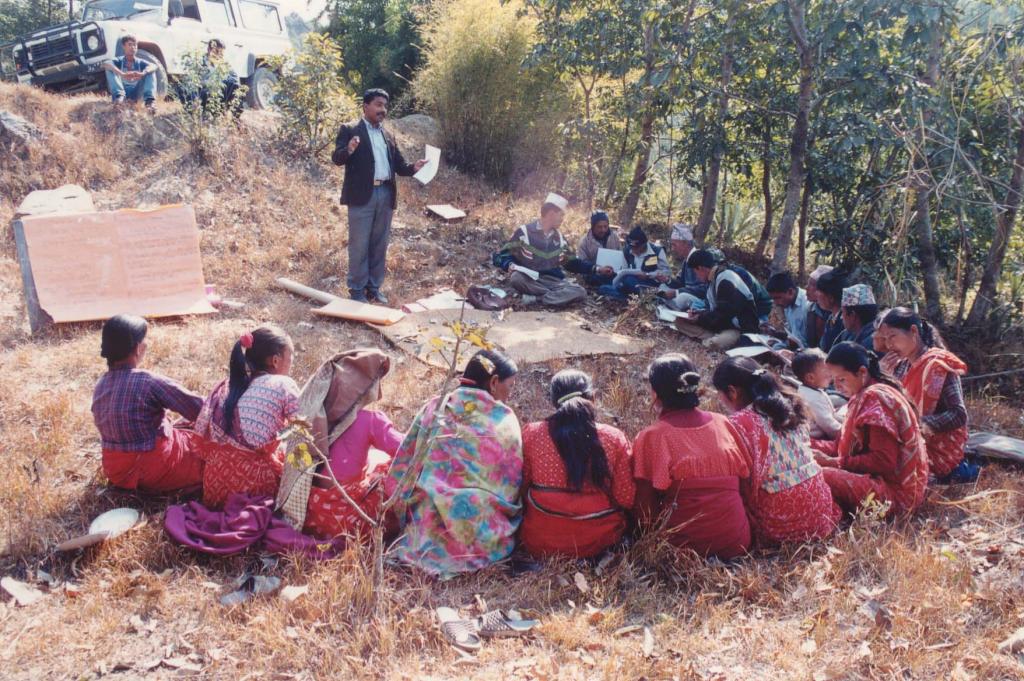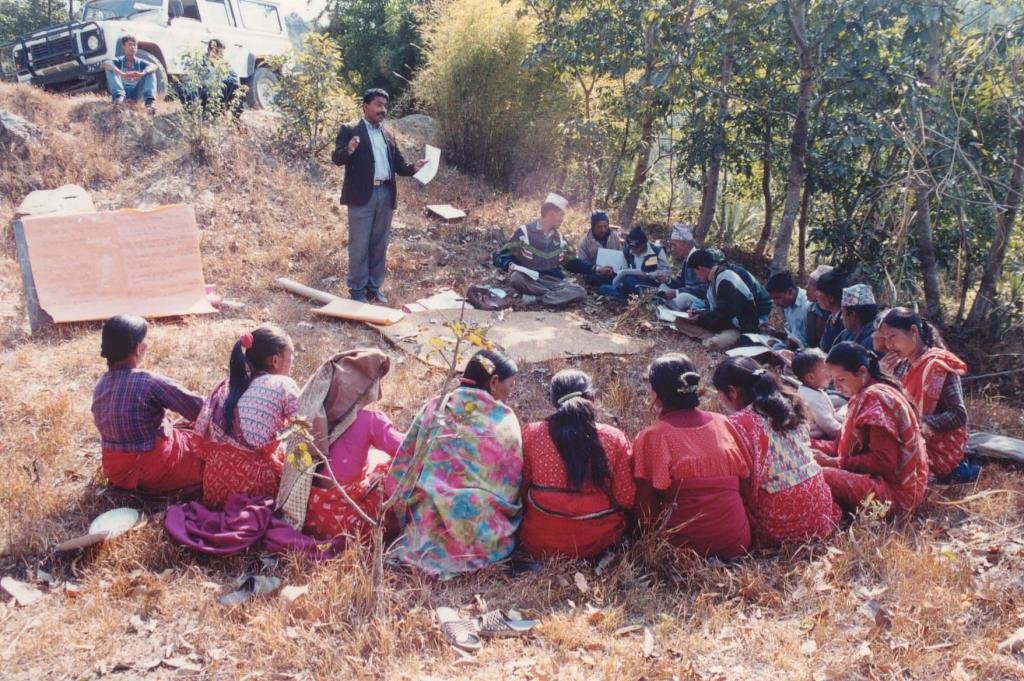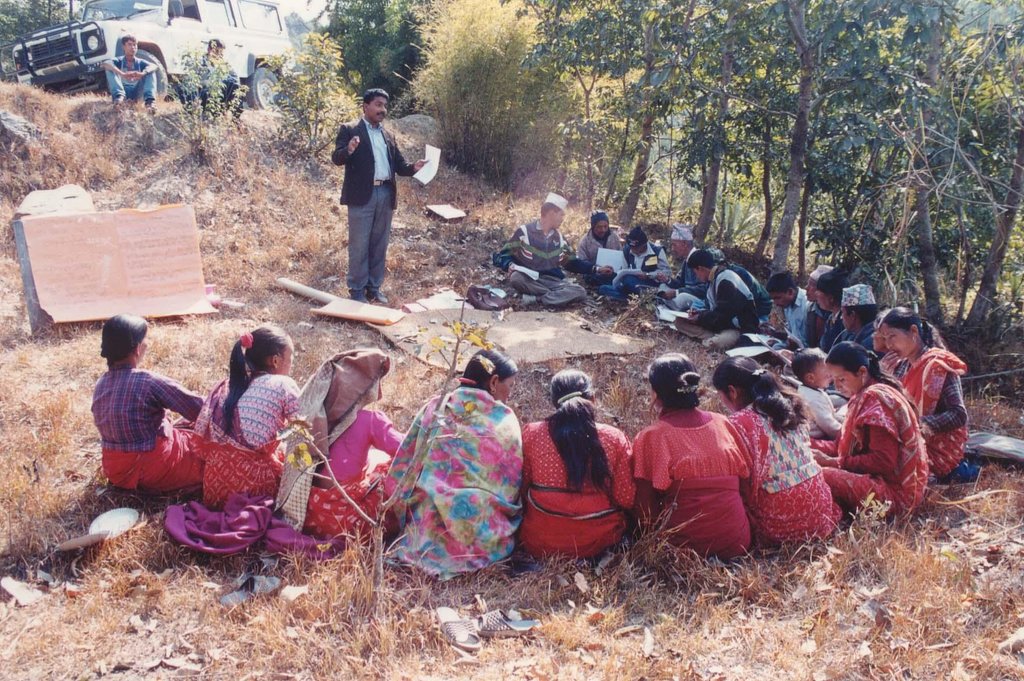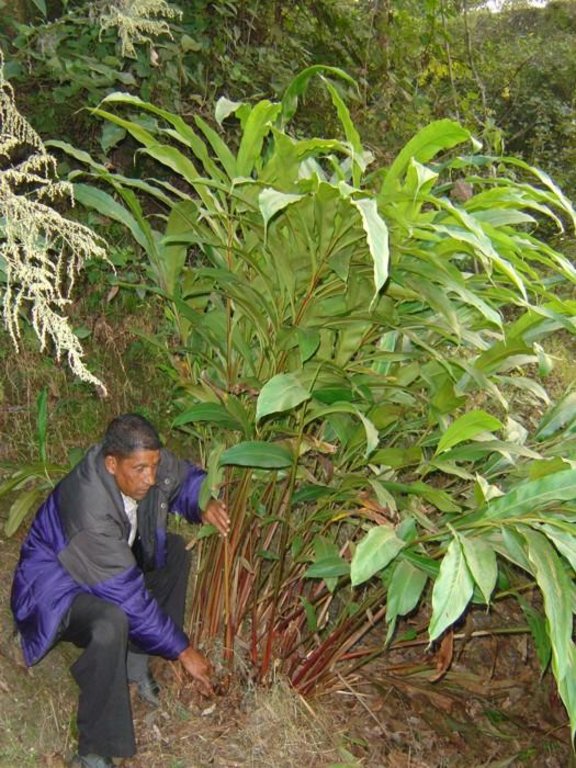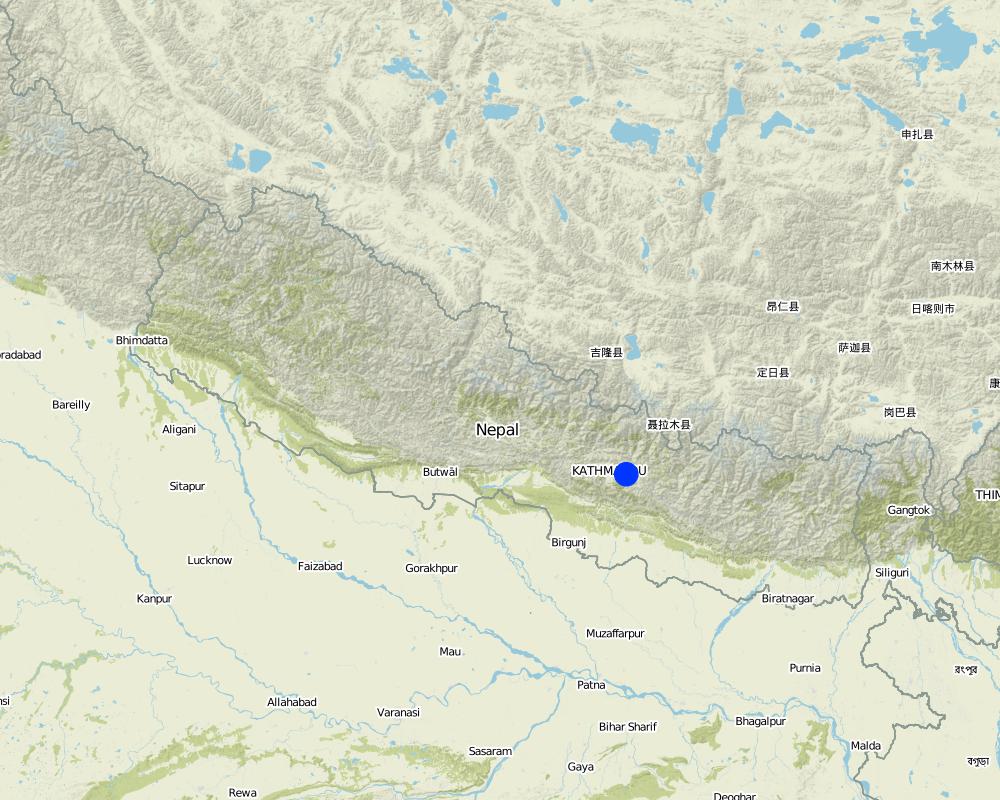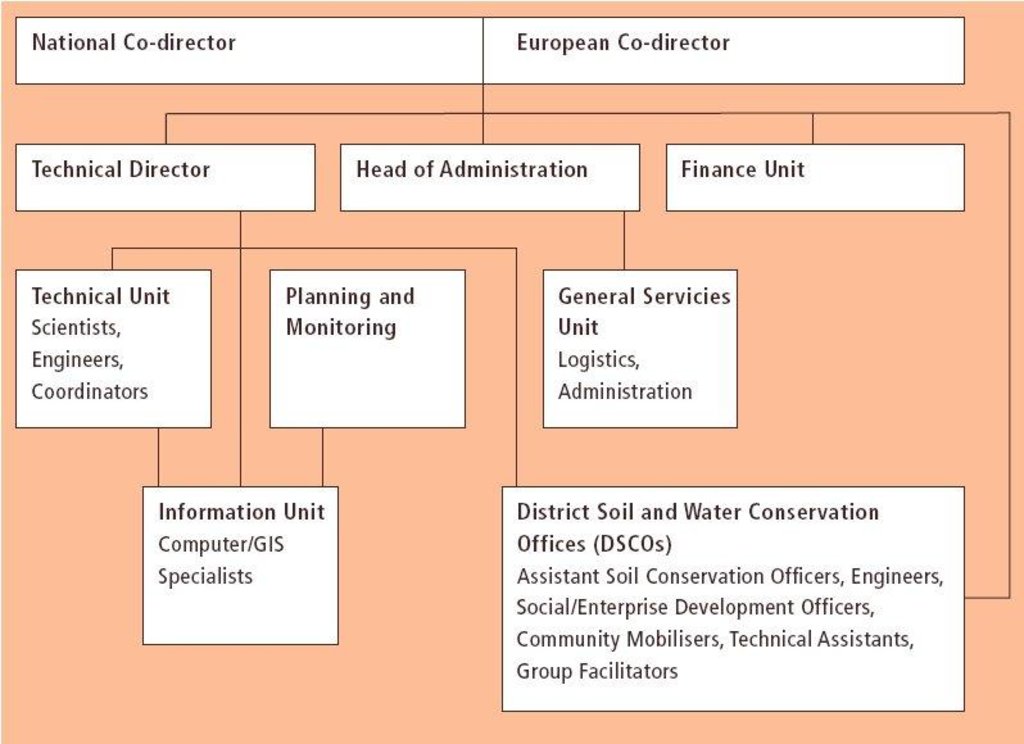Integrated watershed management for landslip and stream bank stabilisation [Nepal]
- Creación:
- Actualización:
- Compilador: Dileep Kumar Karna
- Editor: –
- Revisores: Fabian Ottiger, Deborah Niggli
Pahiro ra nadikinar katan roktham ka lagi ekikrit jaladhar byabasthapan (Nepali)
approaches_2354 - Nepal
Visualizar secciones
Expandir todo Colapsar todos1. Información general
1.2 Detalles de contacto de las personas de referencia e instituciones involucradas en la evaluación y la documentación del Enfoque
Especialista MST:
Especialista MST:
Especialista MST:
Nombre del proyecto que facilitó la documentación/ evaluación del Enfoque (si fuera relevante)
Book project: where the land is greener - Case Studies and Analysis of Soil and Water Conservation Initiatives Worldwide (where the land is greener)Nombre de la(s) institución(es) que facilitaron la documentación/ evaluación del Enfoque si fuera relevante)
G.B. Pant Institute of Himalayan Einvironment & Development (G.B. Pant Institute of Himalayan Einvironment & Development) - IndiaNombre de la(s) institución(es) que facilitaron la documentación/ evaluación del Enfoque si fuera relevante)
ICIMOD International Centre for Integrated Mountain Development (ICIMOD) - NepalNombre de la(s) institución(es) que facilitaron la documentación/ evaluación del Enfoque si fuera relevante)
CDE Centre for Development and Environment (CDE Centre for Development and Environment) - Suiza1.3 Condiciones referidas al uso de datos documentados mediante WOCAT
El compilador y la/s persona(s) de referencia claves aceptan las condiciones acerca del uso de los datos documentados mediante WOCAT :
Sí
1.4 Referencia/s al/los Cuestionario(s) de Tecnologías MST

Landslip and stream bank stabilisation [Nepal]
Integration of vegetative and structural measures for landslip, stream bank and gully stabilisation on hillsides.
- Compilador: Dileep Kumar Karna
2. Descripción del Enfoque MST
2.1 Breve descripción del Enfoque
Integrated watershed management as an example for landslip and stream bank stabilisation based on fostering a partnership between community institutions, line agencies, district authorities and consultants
2.2 Descripción detallada del Enfoque MST
Descripción detallada del Enfoque MST:
Aims / objectives: The sustainable management of mountain watersheds is a huge challenge for watershed management programmes due to the lack of collaboration between the various institutions involved. Building of synergies between these institutions is crucial for improved management. The Bagmati Integrated Watershed Management Programme (BIWMP) started in 1986, initiated, coordinated, and organised by the Department of Soil Conservation and Watershed Management with support from the European Commission. The programme aimed to help overcome natural resource degradation and thereby raise the standard of living of the rural population. The main causes of degradation and options to address the related problems were identified through participatory action research. Landslip and stream bank stabilisation was identified as one of the most promising and needed options to conserve soil and water, whilst providing direct livelihood benefits to local people, for example planting of large cardamom, later used as a cash crop, and reestablishment of damaged agricultural terrace above the landslip. The approach was to foster partnership between and among communities, district authorities, line agencies, and consultants. Key priorities were to ensure the equitable involvement of women and socially disadvantaged people and to promote local ownership, institutional capacity building, and sustainability.
Methods: The programme used participatory extension methods such as farmer-to-farmer exchange, training workshops, and onsite demonstrations, with participatory approaches to planning, implementing, and monitoring. The activities were based on villager’s priorities and were implemented by individual households, farmer groups, and village institutions. The local village development committee, local NGOs, community forest user group, and individual households worked together on landslip and stream bank stabilisation. Involving a range of stakeholders was paramount for success.
Stages of implementation: The first phase began in 1986 and focused on developing technical packages which were implemented through user groups. The second phase focused on improvements to implementation procedures, especially community organisation, extension, and income generation activities. The capacity of community groups was developed by establishing communication facilities, building up community networks, and empowering women and disadvantaged groups. BIWMP ended in 2003 with much of its success attributed to the close involvement of all the main stakeholders, and especially the local people, in all the activities. It successfully helped land users to adopt improved livelihood options.
2.3 Fotos del Enfoque
2.5 País/ región/ lugares donde el Enfoque fue aplicado
País:
Nepal
Región/ Estado/ Provincia:
Bagmati Watershed
Map
×2.6 Fechas de inicio y conclusión del Enfoque
Indique año del inicio:
1992
Año de conclusión (si el Enfoque ya no se aplica):
2003
2.7 Tipo de Enfoque
- proyecto/ basado en un programa
2.8 Propósitos/ objetivos principales del Enfoque
The Approach focused mainly on SLM with other activities (poverty reduction through sustained income generation, infrastructure improvement through equitable involvement of women and the socially disadvantaged.)
To overcome the constraints to effectively implementing a watershed management programme by building synergies between diverse stakeholder institutions. In the case of landslip and stream bank stabilisation work, the specific objective was to come up with a technology that conserved soil and water whilst also providing direct livelihood benefits to local people.
The SLM Approach addressed the following problems: Lack of institutional capacity and collaboration for managing watershed resources
2.9 Condiciones que facilitan o impiden la implementación de la/s Tecnología/s aplicadas bajo el Enfoque
normas y valores sociales/ culturales/ religiosos
- impiden
Following conventional top-down approaches.
Treatment through the SLM Approach: Introduction of improved methods with more participation/ involvement of land users.
entorno institucional
- impiden
Lack of inter-institutional collaboration.
Treatment through the SLM Approach: Building and ensuring collaboration.
marco de trabajo legal (tenencia de tierra, derechos de uso de tierra y agua)
- facilitan
The existing land ownership, land use rights / water rights greatly helped the approach implementation: The fact that the land was communal land (state property, use right with community) greatly helped smooth implementation of the approach as it was not necessary to deal with different land users.
conocimiento de MST, acceso a apoyo técnico
- impiden
Lack of new options.
Treatment through the SLM Approach: Training about new technologies.
3. Participación y roles de las partes interesadas involucradas
3.1 Partes interesadas involucradas en el Enfoque y sus roles
- usuarios locales de tierras/ comunidades locales
Men and women worked equally. existing groups of land users; men and women worked equally. BIWMP took a bottom-up approach to planning and implementation and encouraged the equitable involvement of women in its activities. The decisions about implementing the landslip and stream bank stabilisation technology were taken jointly by men and women
- especialistas MST/consejeros agrícolas
- profesores/ niños en edad escolar/ estudiantes
- gobierno nacional (planificadores, autoridades)
- organización internacional
Si varias partes interesadas estuvieron involucradas, indique la agencia principal:
For the landslip and stream bank stabilisation technology, the approach was mainly designed by programme staff of the Kathmandu District Soil Conservation Office.
3.2 Involucramiento de los usuarios locales de tierras/ comunidades locales en las distintas fases del Enfoque
| Involucramiento de los usuarios locales de tierras/ comunidades locales | Especifique quién se involucró y describa las actividades | |
|---|---|---|
| iniciación/ motivación | interactivo | rapid/participatory rural appraisal |
| planificación | interactivo | rapid/participatory rural appraisal; Share information from users right from planning period. |
| implementación | interactivo | responsible for major steps; Users were agreed to conserve soil by using SLM approaches. |
| monitoreo y evaluación | interactivo | Mainly: reporting, public meetings, measurements/observations; partly: workshop/seminars; Regular monitoring and evaluation were successfully conducted by DSCO Office for the backstopping of the activities. |
| Research | interactivo | on-farm; This site is used as a Farmers School for extension of the technology on National and International level. |
3.3 Flujograma (si estuviera disponible)
Descripción:
Organogram of the Bagmati Integrated Watershed Management Programme (BIWMP). The landslip and stream bank stabilisation work was implemented by the Kathmandu District Soil Conservation Office supervi
3.4 La toma de decisiones en la selección de Tecnología(s) MST
Especifique quién decidió la selección de las Tecnología/ Tecnologías a implementarse:
- principalmente por especialistas MST en consulta con usuarios de tierras
Explique:
The land users did not know about the technologies
Decisions on the method of implementing the SLM Technology were made by mainly by SLM specialists with consultation of land users. As measures required technical know-how
4. Apoyo técnico, fortalecimiento institucional y gestión del conocimiento
4.1 Construcción de capacidades / capacitación
¿Se proporcionó la capacitación a usuarios de tierras/ otras partes interesadas?
Sí
Especifique quién fue capacitado:
- usuarios de tierras
Forma de capacitación:
- de agricultor a agricultor
- áreas de demostración
- reuniones públicas
Temas avanzados:
On soil and water conservation
4.2 Servicio de asesoría
¿Los usuarios de tierras tienen acceso a un servicio de asesoría?
Sí
Especifique si servicio proporcionado se realizó:
- en los campos de los usuarios de tierras
Describa/ comentarios:
Name of method used for advisory service: Integrated Watershed Management Programme; Key elements: Participatory Rural Appraisal, Trainings, Farmer to farmer exchange, workshops, seminars, On site Demnostration; 1) Advisory service was carried out through: government's existing extension system; Extension staff: mainly government employees 2) Target groups for extension: land users; Activities: Planning,Training, Awareness about SLM approaches
Advisory service is quite adequate to ensure the continuation of land conservation activities; An extension workers is able to cover the areas where activities are implemented in small scale (i.e. subwatreshed or Micro subwatershed level programme).
4.3 Fortalecimiento institucional (desarrollo institucional)
¿Se establecieron o fortalecieron instituciones mediante el Enfoque?
- sí, mucho
Especifique el nivel o los niveles en los que se fortalecieron o establecieron las instituciones:
- local
Especifique el tipo de apoyo:
- construcción de capacidades/ entrenamiento
- equipo
4.4 Monitoreo y evaluación
¿El monitoreo y la evaluación forman parte del Enfoque?
Sí
Comentarios:
bio-physical aspects were ad hoc monitored through measurements
technical aspects were regular monitored through observations
socio-cultural aspects were regular monitored through observations
economic / production aspects were regular monitored through observations
area treated aspects were ad hoc monitored through measurements
no. of land users involved aspects were regular monitored through observations
management of Approach aspects were regular monitored through observations
There were many changes in the Approach as a result of monitoring and evaluation: The approach described was designed on the basis of the results shown through monitoring and evaluating the first phase of BIWMP (1986-1992). In the second phase from 1992, more attention was focused on building up the capacity of community groups to plan, implement, and continue development activities. Capacity was built through (1) community-level training; (2) supporting the installation of com
4.5 Investigación
¿La investigación formó parte del Enfoque?
Sí
Especifique los temas:
- sociología
- economía/ marketing
- ecología
- tecnología
Proporcione detalles adicionales e indique quién hizo la investigación:
see also further reading
5. Financiamiento y apoyo material externo
5.1 Presupuesto anual para el componente MST del Enfoque
Si no se conoce el presupuesto anual preciso, indique el rango:
- > 1,000,000
Comentarios (ej. fuentes principales de financiamiento/ donantes principales):
Approach costs were met by the following donors: international (European Commission): 81.0%; government (national - His Majesty's Government (Nepal)): 4.0%; local community / land user(s) (Bagmati watershed): 15.0%
5.2 Apoyo financiero/material proporcionado a los usuarios de tierras
¿Los usuarios de tierras recibieron financiamiento/ apoyo material para implementar la Tecnología/ Tecnologías? :
Sí
5.3 Subsidios para insumos específicos (incluyendo mano de obra)
- agrícola
| Especifique qué insumos se subsidiaron | En qué grado | Especifique los subsidios |
|---|---|---|
| semillas | ||
| Seedlings and samples | parcialmente financiado | |
- construcción
| Especifique qué insumos se subsidiaron | En qué grado | Especifique los subsidios |
|---|---|---|
| community infrastructure (cement, bricks, stones) | totalmente financiado | |
Si la mano de obra de usuarios de tierras fue un insumo sustancial, ¿fue:
- voluntario?
Comentarios:
About 75% of the labour for the landslip and stream bank stabilisation work was voluntar. The remainder was paid
5.4 Crédito
¿Se proporcionó crédito bajo el Enfoque para actividades MST?
No
6. Análisis de impacto y comentarios de conclusión
6.1 Impactos del Enfoque
¿El Enfoque ayudó a los usuarios de tierras a implementar y mantener Tecnologías MST?
- No
- Sí, un poco
- Sí, moderadamente
- Sí, mucho
The approach helped to improve soil and water management by promoting many activities related to agroforestry, water harvesting, landslip stabilisation, and community forestry. Many local land users adopted these technologies.
¿El Enfoque mejoró cuestiones de tenencia de tierra/ derechos de usuarios que obstaculizaron la implementación de la Tecnologías MST?
- No
- Sí, un poco
- Sí, moderadamente
- Sí, mucho
By influencing the forest department ot allocate forest to the people as community forest.
Did other land users / projects adopt the Approach?
- No
- Sí, un poco
- Sí, moderadamente
- Sí, mucho
It is not known whether this approach has been taken to address landslip and stream bank erosion problems in other areas by other projects.
6.3 Sostenibilidad de las actividades del Enfoque
¿Pueden los usuarios de tierras sostener lo que se implementó mediante el Enfoque (sin apoyo externo)?
- incierto
Si respondió no o incierto, especifique y comente:
The land users were keen on maintaining the implemented technologies due to the benefits they could get from it. There has to be a strong driving force within the land users and the community to continue this approach.
6.4 Fortalezas/ ventajas del Enfoque
| Fuerzas/ ventajas/ oportunidades desde la perspectiva del usuario de la tierra |
|---|
| Helped land users improve their livelihoods. (How to sustain/ enhance this strength: Similar approaches should be implemented by government and community programmes.) |
| Fuerzas/ ventajas/ oportunidades desde la perspectiva del compilador o de otra persona de referencia clave |
|---|
| Involves all key actors in watershed management. (How to sustain/ enhance this strength: Institutionalise the approach.) |
| The approach encourages land users communities and local institutions to get involved in planning and decision making (How to sustain/ enhance this strength: Involve them more in planning and decision making) |
| The implementation of technologies through this approach is cost-effective and socio-culturally acceptable. (How to sustain/ enhance this strength: Take into account local resources and knowledge) |
6.5 Debilidades/ desventajas del Enfoque y formas de sobreponerse a ellos
| Debilidades/ desventajas/ riesgos desde la perspectiva del usuario de la tierra | ¿Cómo sobreponerse a ellas? |
|---|---|
| No opinion. |
| Debilidades/ desventajas/ riesgos desde la perspectiva del compilador o de otra persona de referencia clave | ¿Cómo sobreponerse a ellas? |
|---|---|
| Some activities with high input requirements may not be spontaneously adopted by poor land users | Further research on how to reduce inputs or provide specifi c incentives for such disadvantaged groups. |
| The approach is 'project focussed' | Institutionalise the approach |
| The approach does not focus on landless families. | Implement watershed management activities that involve and benefit landless people |
7. Referencias y vínculos
7.1 Métodos/ fuentes de información
- visitas de campo, encuestas de campo
- entrevistas con usuarios de tierras
7.2 Referencias a publicaciones disponibles
Título, autor, año, ISBN:
Mallik, D.B. (2000) 'Working with Community'. In Jaladhar-QuarterlyBIWM (1998 to 2001) Annual Workplans for Project Years 1998 to 2002, prepared for Government of Nepal,MOFS,DSCWM and EU; Kathmandu, Nepal
¿Dónde se halla disponible? ¿Costo?
BIWMPBIWMP email: biwmp@mos.com.np
Título, autor, año, ISBN:
BIWM (1998 to 2001) Annual Workplans for Project Years 1998 to 2002, prepared for Government of Nepal,MOFS,DSCWM and EU; Kathmandu, Nepal
¿Dónde se halla disponible? ¿Costo?
BIWMP email: biwmp@mos.com.np
Vínculos y módulos
Expandir todo Colapsar todosVínculos

Landslip and stream bank stabilisation [Nepal]
Integration of vegetative and structural measures for landslip, stream bank and gully stabilisation on hillsides.
- Compilador: Dileep Kumar Karna
Módulos
No se hallaron módulos


